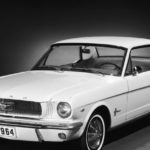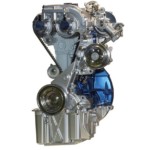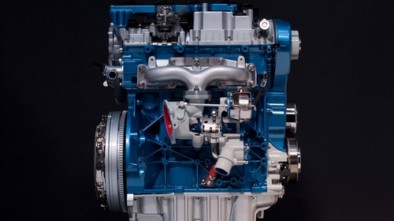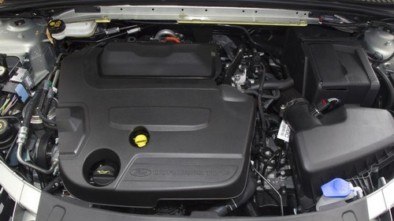Ford Mustang - part two - model history
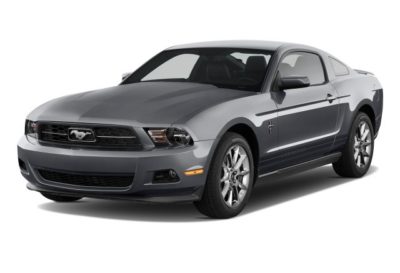
Ford Mustang
Iacocca began work on the 1974 Mustang in late 1969 when he was promoted to second chief man at Ford.
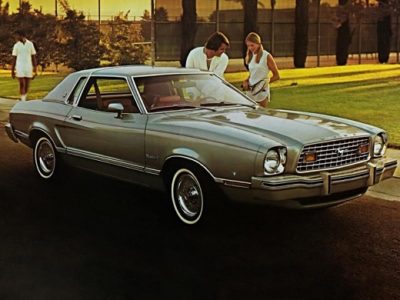
His plan was to return to the original formula from ten years earlier - a small and light sports car, available with a rich selection of equipment, which will be equally loved by customers of all years. Although today this Ford Mustang, better known as the Ford Mustang II, has been criticized for not deserving to bear the same name as its legendary predecessors, in the early 1970s the audience had a completely different opinion. In addition to the already mentioned problems with high insurance prices and new standards on exhaust measures, another problem for American vehicle manufacturers was high fuel prices. Namely, in 1974, OPEC imposed an embargo on Western Europe and the United States, and as a result, fuel prices jumped by about four times. In such conditions, customers did not want large and heavy V8 models, but smaller and more efficient cars.
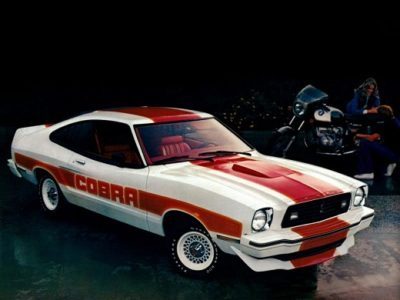
Under such conditions, audiences turned to smaller and Japanese cars, but Iacocca was preparing a new Mustang based on the small platform Ford Pinta. In his biography, Iacocca wrote that he received a lot of criticism for this move, since in Detroit there was an unwritten rule that every next generation of models must be bigger, not smaller. When this car was presented to the public at the end of 1973, in front of them was a car 43 centimeters shorter and 165 kg lighter compared to its predecessor. On the design side, the Ford Mustang II retained recognizable lines such as the long hood and short trunk, but at first glance it could be seen that the performance was gone and that luxury now comes first. But this design was not entirely Ford's and the Italian design house Ghia was contacted to work with the early prototype.
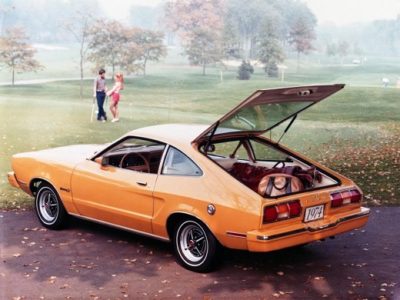
Although most of the lines from this prototype Mustang did not go into series production, Ford decided that the most luxurious version bears the Ghia label instead of the previous Grande. As the convertible could not meet the latest safety standards, it was decided to re-base the offer on the coupe and fasthack. On the mechanical side, the platform is shared with the small Pint, Ford's first subcompact car, which will remain known throughout history for unsafe tanks, but fortunately the Ford Mustang has not had such problems. But perhaps the biggest surprise came when Ford announced that for the first (and only) time in history, a V8 engine would not be an option. The standard engine was now a 2.3 L with four cylinders and 88 hp, while the only option was a German 2.8 L V6 engine with 105 hp. Even the sportiest model in the group, the Mach 1, paired with a V6 engine could not accelerate to 100 km / h in less than 17 seconds, but despite all the criticism - the audience received the Ford Mustang II very well.
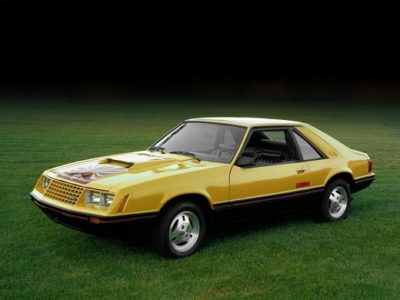
Ford advertised the Mustang as a "real car at the right time" thanks to low consumption of eight liters per 100 kilometers, and thanks to high fuel prices in 1974, as many as 385993 Mustangs were sold. For 1975, the offer was expanded with a new V8 engine, size 4.9 L (although it was advertised as 5.0 L), but it was only a shadow of its predecessor and developed only 139 hp. This reduced acceleration to 100 km / h in a solid 10.5 seconds, and one of the bigger criticisms was the fact that it was only available with an automatic transmission. The Mustang II will remain in production until the end of 1978, without major changes, and we will single out several special models. One was the Cobra II, available with V6 and V8 engines, with large graphics and "Cobra II" markings, and the other was the King Cobra.
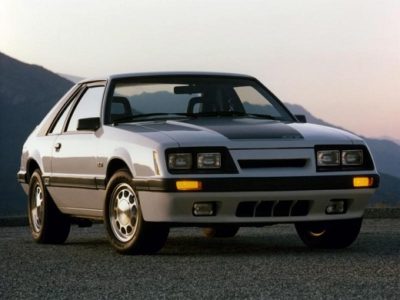
Introduced in 1978, the King Cobra was only available with full equipment and a V8 engine, and its goal was to divert attention from the popular Pontiac Firebird. This is especially true of the hood graphics, where King Cobra had large snake graphics. The late 1970s also marked a new beginning for the Mustang, which for the first time now shared nothing with its predecessor. During that period, Ford experimented with several aerodynamic concepts, and although early prototype images suggest that the Ford Mustang should have received such a design, it did not. Unfortunately, Iacocca was fired in 1978 after a feud with Henry Ford II, so new president Phillip Caldwell was in charge of the new model. By the late 1970s, much had changed in the auto industry. Japanese rivals have begun to conquer a growing portion of the market, and the US government has introduced new CAFE consumption standards.
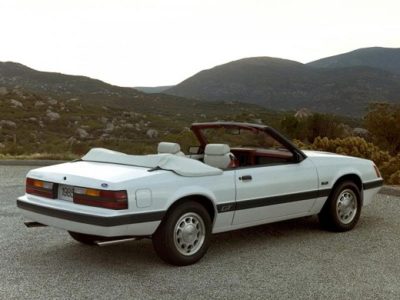
In such conditions, the new Ford Mustang should have been more modern and efficient than ever before. When the generation introduced in 1979 is needed, the Mustang is now built on the new Fox platform, which will power most Ford, Mercury and Lincoln models over the next decade or so. Compared to the Mustang II, the Fox Mustang was five centimeters longer, but 91 kg lighter, making it even lighter than the original 1964 model. It was also more aerodynamic than ever before and one of the most aerodynamic cars on the American market. The design brought a new revolution, and apart from the "long hood, short trunk", the Fox Mustang did not share much with its predecessor. While the base 2.3 L, as well as the 2.8 L and 5.0 L, engines were switched directly from the Mustang II, the biggest news was the new 2.3 L turbo engine with 131 hp.
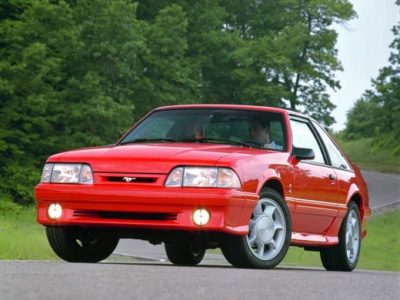
Designed for all those who want four-cylinder engine economy but V8 power, the turbo engine has reduced acceleration to 100 km / h in a solid 9.5 seconds. Consumption standards have become stronger than ever before 1980 and as a result the Mustang gets a new 4.2 L V8 engine, replacing the 5.0 L, with only 117 hp. Under such conditions, the next three years proved to be grim for this giant, but the sales were good enough that Ford did not want to play with the winning formula. Ford also knew that General Motors was preparing a new generation of Cams and Firebirds and decided to offer a few new ones. One of them was the more aggressive design, but the most attention was drawn to the new GT model with the equally new 5.0-liter 157hp engine. The 1983 GT model is now considered to be a model that restored muscle car spirit, and on the tracks it could pair significantly more expensive Chevrolet Corvette and Porsche 928.
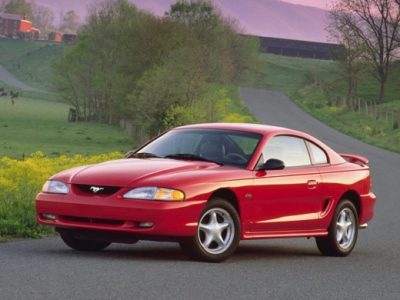
For 1983, a convertible was added to the line for the first time since 1973, and in 1984 a new SVO model debuted. Specifically, Ford was unhappy that Mustang was followed by a reputation for being fast on the right, so he set out to build a car that would surpass even the legendary Porsche 911 on the track. The result was the 1984 SVO (Special Vehicle Operations) Mustang, with a 2.3 L turbocharged engine and 205 hp, but with a starting price of $ 15000, it was never an overly popular option for buyers. Throughout 1980, annual Mustang sales generally ranged from around 150000 units, which Ford considered insufficient to keep this legendary car in production. Younger buyers were increasingly turning to Japanese imports with front traction, so it seemed the Mustang had mastered the weather and could soon be off.
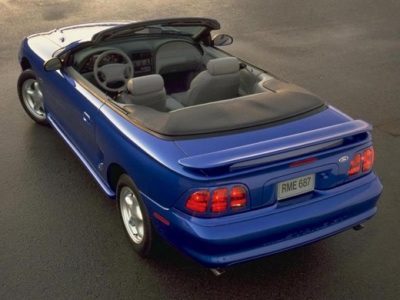
Back in the early 1980s, Ford, in collaboration with its Japanese partner Mazda, was working on a new car that would be manufactured in the US state of Michigan along with the Mazda MX-6 and would provide front-wheel drive for both I4 and V6 engines. When the audience learned that the said car was going to be the next generation of Mustangs, Ford was publicly criticized by all the media and also received a number of letters from faithful Mustang owners talking about their experience with this legendary car. The American vehicle manufacturer had no choice and had to leave the Mustang in production, and since the planned replacement was already in the final stages of testing, Ford decided to call it a Rehearsal and go on sale in 1989. Since the 1987 Mustang was originally not even planned. Ford didn't have much time to introduce a refreshed model.
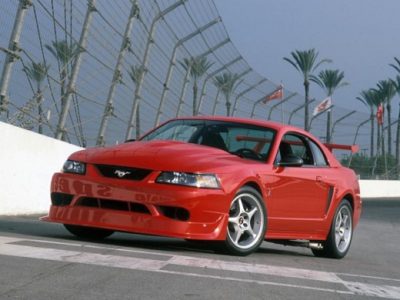
When such a car debuted, it provided different headlights and got a V8 engine boost to 225hp. The poorly-sold SVO model was discontinued, and as fuel prices fell over time, so did the turbocharged engines and they were quietly withdrawn after 1986. To keep this model alive before the replacement debuts, Ford is out of time On time, it featured special versions, such as Saleen, Roush, and Cobra R. These moves proved to be excellent and the sale again exceeded 200000 copies, and the audience particularly liked the Mustang compared to the Camaro and Firebird because of its light weight. Work on the fourth-generation Mustang began in the summer of 1990 under similar conditions to 26 years earlier.
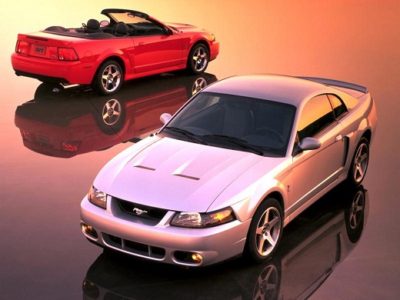
A team of young engineers would gather after hours and discuss possible ideas, and former Formula 1 star Jackie Stewart was invited to help. Ford wanted a brand new model, but in the end over 500 of the 1850 parts of the Mustang were transferred from the predecessor. In development, Ford presented several different ideas, from elegant with the Burce Jenner label (in honor of the athlete of the same name) to aggressive with the Rambo label. The general idea of a long hood and a short trunk has not changed, and for the first time in history, fastback was no longer an option. On the mechanical side, Ford decided to offer only two engines - a 3.8 L V6 with 145 hp and a 5.0 L with 240 hp. However, the new generation of Camaro and Firebird arrived a year earlier, so Ford lost a large number of customers in the meantime.
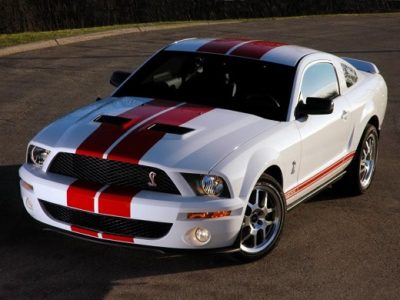
The outdated 5.0 L engine was later replaced with a more modern 4.6 L, and for the first time in a long time the Ford Mustang returned to motorsport. This generation received its first design changes in 1999, when it debuted a model with a new "New Edge" design formula. This model will remain in production until the end of 2004 and in that period will release some of the most famous modern Mustangs. One of them was the 2000 Cobra R with an atmospheric 5.4 L engine and 385 hp which, to this day, is considered perhaps the best Mustang to drive on the track. With a starting price of $ 55000, Ford produced only 300 units. In 2003, she remained famous for the Mustang for two reasons. The first lay in the fact that General Motors shut down the Camaro and Firebird after a disappointing sales of less than 30000 vehicles, while the Ford Mustang regularly exceeded the figure of 200000 vehicles, and the second reason lies in the SVT Cobra version.
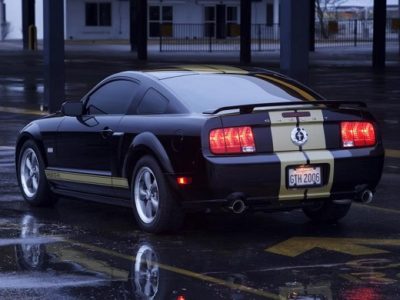
Made by Ford’s Special Vehicle Team, the SVT Cobra provided a V8 engine with a compressor and 390 hp, and with acceleration to 100 km / h in just 4.5 seconds, it was also the fastest production Mustang ever produced. Back in the late 1990s, Ford noticed the great popularity of cars with retro designs, such as the Volkswagen Beetle, Mini Cooper and Chrysler PT Cruiser. The first attempt of the American giant to join the class was the 2002 Ford Thunderbird, but despite all the praise, sales were never at a satisfactory level. However, thanks to early praise, the idea was born in Ford that the retro Mustang could be a great success and the new team quickly got to work. The concept was unveiled in 2003 at the Detroit Motor Show, where it was named the most beautiful car despite legends such as the Cadillac Sixteen and the Aston Martin V8 Vantage.
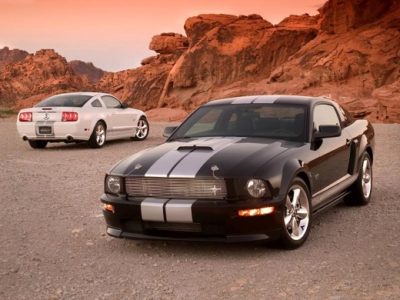
The design of the Mustang was taken care of by J May, who used many lines from 1964-1970 models for inspiration. The "Long Hood Short Gap" strategy continued this time as well, with oval headlights and a roof taken directly from the 1966 fastback. The serial model was ready two years later at the same location and delighted everyone present. The buyer could choose between two engines, a 4.0 L V6 with 210 hp and a 4.6 L V8 with 315 hp, and about 200000 models were sold in the first year. As early as the following year, it continued to grow, and Ford established a partnership with the legendary Carroll Shelby. The new GT500 with a 5.4 L V8 engine and as much as 540 hp will soon debut, and the Ford Mustang has achieved enviable results in the Grand Am series (where it won titles alongside competitors such as the BMW M3 and Porsche 996), NASCAR and sports car classes.
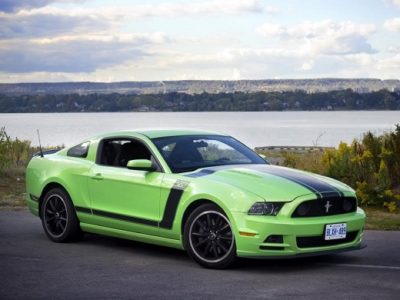
The great success of the retro Mustang again caught the competition asleep, but this time it did not wait as long as before. As early as 2008, the Dodge Challenger went on sale, and a year later the Chevrolet Camaro. Then comes the problem that the Ford Mustang had 40 years earlier, and it was related to the lack of power. Namely, the Mustang's 315 hp was not enough against the 425 hp in the Challenger and Camaro, and both models also had significantly more efficient V6 engines. The Ford Mustang was significantly lighter, but despite that, the difference in power was great. The first design changes of the retro Mustang were given in 2010, and a year later the offer of engines was refreshed. The outdated truck's 4.0 L V6 engine was replaced with the more modern 3.7 L V6 with 305 hp, and the 5.0 L V8 engine debuted again - now with 420 hp. In comparative tests, Ford's giant beat the competition, and it seems that the "icing on the cake" arrived in 2013.
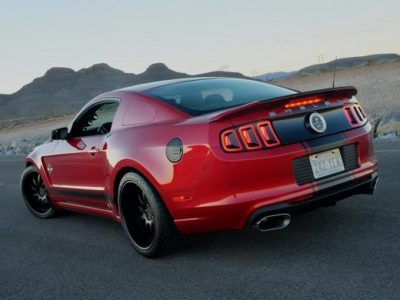
Namely, it was known from before that the brand new Mustang would debut in 2015 on its 50th anniversary, so Ford decided to go in style. The Boss 302 with a 5.0 L engine and 444 hp and a long list of off-road modifications has hit the market again, surpassing the big BMW M3 for the first time, and then the most powerful Mustang ever produced. Namely, for 2013, the Shelby GT500 got a new 5.8 L engine with as much as 662 hp and acceleration to 100 km / h in just 3.7 seconds. Despite all the successes, the retro Mustang has survived in the market for nine years and it has become clear that the time for change has arrived. The sixth generation Mustang was presented at the Detroit Motor Show in early 2014, where it was also the biggest premiere, and for the first time in history, this car became global.
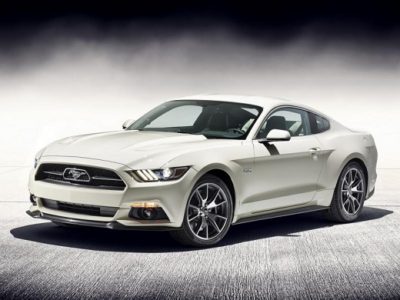
Knowing that, Ford had to improve the design, so the roof and the rear part kept the retro lines, while the front part was modeled on the global "Kinetic" design school. The weight of the vehicle was reduced by 100 kg thanks to the use of lighter materials, and the offer of V6 and V8 engines remained identical. The biggest news is the new 2.3 L EcoBoost (turbo) engine with 305 hp, which is the first four-cylinder Mustang since 1993 and the first turbo Mustang since 1986. Ford produced 1000 units as a 2014 1/2 model in honor of the legendary model, which went on sale only in mid-1964 and was sold as a 1964 1/2 model, and was later followed by the new Shelby GT350 with over 500 hp from the atmospheric 5.2 L V8 engine. Since 1964, over 9.5 million Mustangs worldwide have found buyers, and some of Ford's most valuable classic cars are the Mustangs.
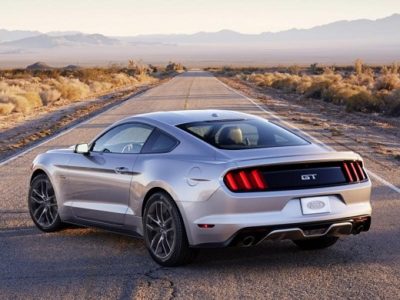
The most valuable of these is the 1967 Shelby GT500 Super Snake with a price tag of $ 1.3 million, followed by the 1965 Shelby GT350R, which will cost you around $ XNUMX million today. If we had to come to a conclusion on the Mustang, perhaps we'd best quote Jeremy Clarkson, the famous presenter Top Gear, also known as an anti-member of the American Driving School, who once said of the Mustang, “The best car ever produced? Well, it changed the world, mobilized a generation, changed the way we look at cars, and it sounded like God was yelling at you. So to say yes. "
Author: Talladega
Provided by: www.brzabrzina.com
Recommendation of similar texts:

Hi there, I am Mladen and I am an auto enthusiast. I started this blog years ago to help like minded people share information about latest cars, car servicing ideas, used car info, exotic cars, and auto technology. You will find helpful articles and videos on a wide variety of cars - Audi, Mercedes, Toyota, Porsche, Volvo, BMW and much more. Ping us if you have anything cool to share on latest cars or on how to make older cars more efficient, or just want to say hi!

